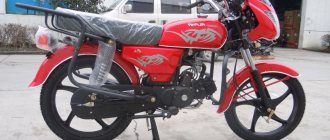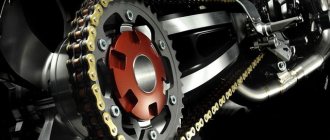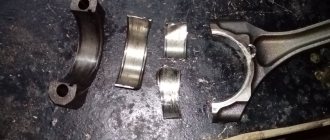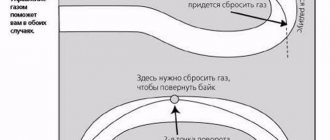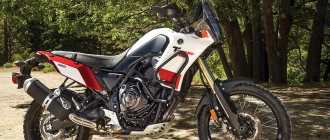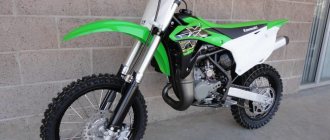- Tips for shifting gears on a motorcycle
- Shifting gears on a motorcycle correctly
- Motorcycle speed
Beginners, just learning the basics of driving and controlling a motorcycle, look with admiration at how motorcyclists skillfully and silently change gears on a motorcycle. And they have an irresistible desire to learn the same impeccable technique for driving their vehicles. But they shouldn’t think that it’s so difficult. It's easy to learn.
How to change gears on a motorcycle
Most motorcycles are equipped with a sequential gearbox. Therefore, the basic principles of all actions are similar.
Gear shifting on a motorcycle differs between “up” and “down”.
The first one means you need to shift into a higher gear. To do this, you engage first gear, and thus increase the speed of the motorcycle, and then gradually switch to the next gear in the following sequence:
- Quickly release the gas, engine speed decreases. At the same time, press the clutch lever.
- Shift into the next gear.
- The clutch needs to be released; At the same time, add gas and increase the speed.
Any gear change to a higher gear occurs in this sequence.
To engage a low gear, use the downshift. This is done when it is necessary to increase the power of the rear wheel, for example, when going uphill. What is the sequence of actions in this case?
- You let off the gas.
- Press the clutch lever.
- Now you need to engage a low gear.
- Release the clutch.
- And at the same time, quickly add gas.
If you want to slow down or stop the motorcycle, you must release the gas before you press the clutch. Brake until you shift from first to second gear.
Sequence of actions when starting off:
- take the correct landing;
- depress the clutch;
- engage 1st gear;
- increase the gas a little;
- slowly release the clutch;
- Adjust the speed only with the throttle handle.
Why do you need to change gears?
The transmission, or mechanism for transmitting torque from the engine to the wheels, is a necessary element of all internal combustion engines. This is due to the operating characteristics of the engine and its traction characteristics.
The physical basis of the movement of a vehicle with an internal combustion engine is as follows:
- high torque has great impulse - it is ideal for overcoming resistance at start;
- When driving in a straight line at speed, high torque on a motorcycle is not effective.
And vice versa: gaining in speed and reducing torque, we begin to lose in strength. If, for example, after uniform high-speed movement we begin to climb uphill, then the resistance to movement will increase. As a result, the engine speed will begin to drop, a small torque will decrease, and the engine will stall. To prevent this from happening, you need to increase the torque.
Maximum torque is provided by speed 1. As the gear number increases, the torque decreases. But still, speeds 1 to 3 are considered lower and allow you to drive slowly, but overcome more resistance. Gears 4 to 6 are considered high.

